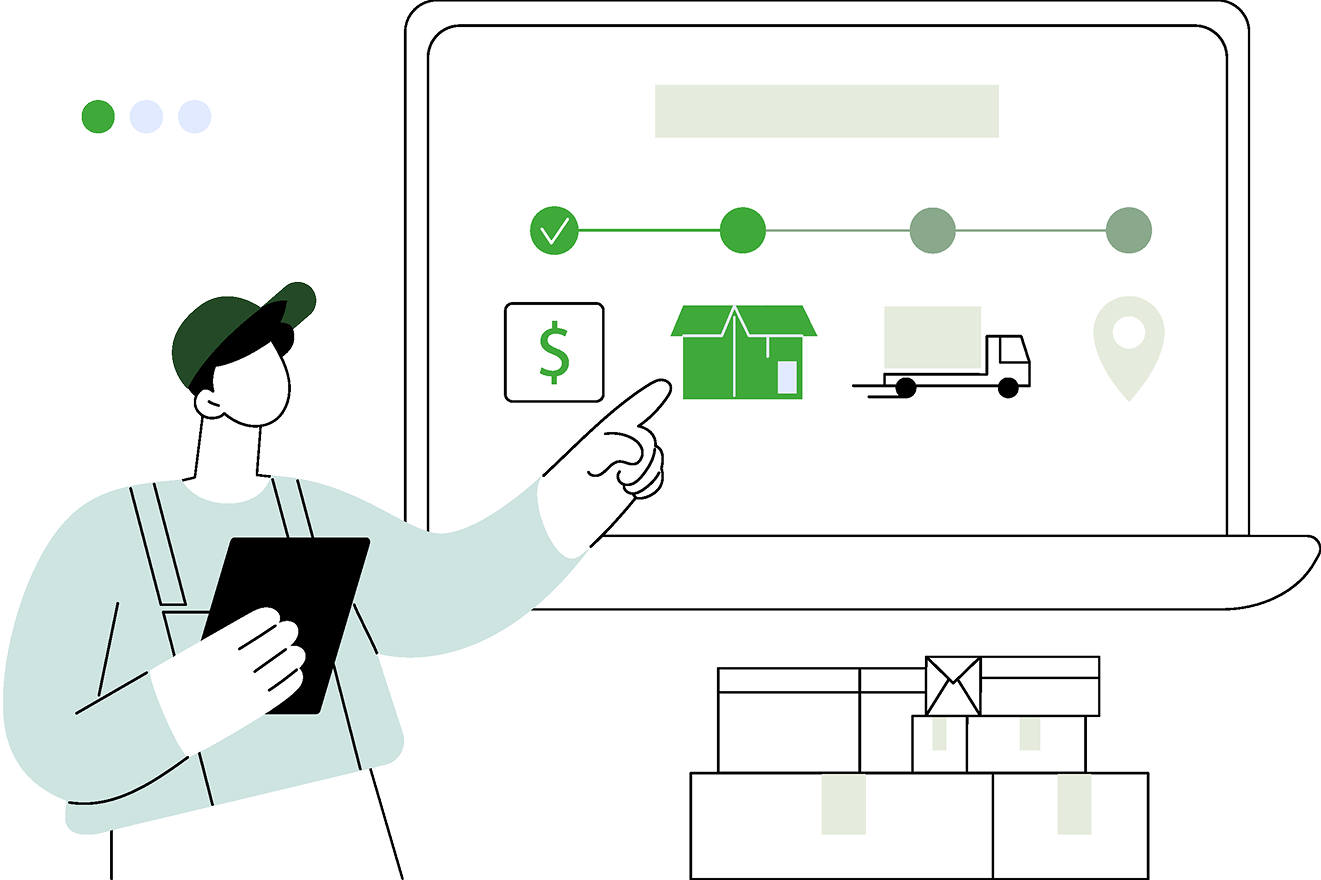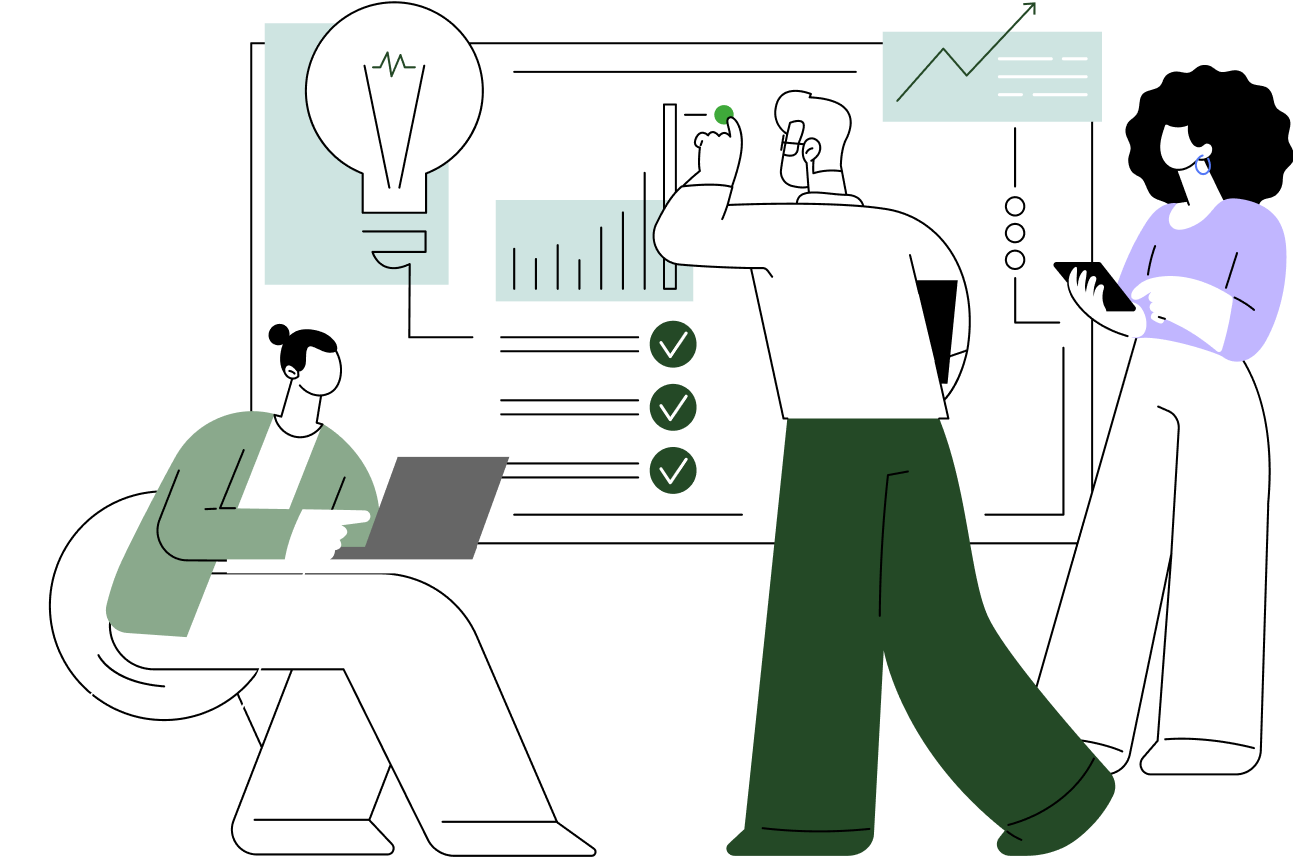In today's business environment, there's so much data that most companies don't know what to do with it. Only about 23% of businesses are actually building a data-driven approach to use their data effectively and get real value from it. But companies that figure it out aren't just getting by – they’re creating a competitive advantage, making informed decisions 3 times faster, and seeing profits up to 8% higher than their competition.
Think of data and analytics as your business's road map, but instead of guessing the future, it's based on real facts. Companies like Netflix and Red Roof Inn are using their data-driven strategies to make money by making smart decisions based on what their data tells them.
Key Takeaways
- A data-driven approach helps make decisions faster and more accurately, leading to 3 times faster actions.
- Better customer insights mean companies can improve the customer experience, which helps retain customers 6 times better.
- Using analytics tools can make operations more efficient, saving money and time by fixing problems before they grow.
- Companies that use data-driven strategies are 85% more likely to achieve big revenue growth compared to those who don’t.
- Real-time data helps businesses adjust quickly to changes, outperform their competitors, and stay ahead in the market.

Better Decision-Making
Data and analytics have changed the way successful companies make decisions. Instead of relying on gut feelings, they use solid data to drive their choices. This means they’re 3 times more likely to make the right decision and 5 times more likely to make those decisions faster.
For example, big retail companies use past sales data to decide what products to keep in stock. They look at customer buying habits, seasons, and trends to make sure they have the right items when people want them.
When companies use instinct instead of data, they take big risks. While most executives agree that data is important, many still make decisions based on their gut. But data-driven companies make 69% better decisions and see an 8% boost in profits.
By building a data-driven culture and using data tools, businesses can turn scattered information into insights that help them grow and work more efficiently.

Understanding Customers Better
Modern data analytics takes raw customer data and turns it into valuable insights. Companies that invest heavily in data are 23 times more likely to attract new customers and 6 times more likely to retain them.
Take The North Face as an example. They use customer data through their app to create highly personalized shopping experiences. By looking at what people have bought, what they’ve browsed, and their general preferences, they suggest products that match what the customer wants.
The results are clear: companies using advanced customer analytics are 54% better at managing their operations and 52% better at understanding their customers. This translates into real improvements, with companies using data-driven personalization seeing up to a 10% increase in revenue thanks to targeted offers and better customer satisfaction.
Boosting Efficiency
Data and analytics help companies make their operations smoother, which saves money and makes them more productive. The value of Big Data shows that companies using analytics are twice as likely to be top performers compared to others.
For example, GE invested $1 billion to monitor machine performance. By analyzing data from sensors in their equipment, they can predict when a machine might break down, preventing costly downtime. This method has really improved how efficiently things are made.
Analytics isn't just for manufacturing. Logistics companies use real-time data to plan better delivery routes, saving fuel and getting packages to customers faster. Data-driven companies also see 54% better control of their operations by automating monitoring and finding problems before they become serious.

Creating a Competitive Advantage
Data analytics gives companies a powerful edge in today’s business environment. Businesses using advanced analytics are 85% more likely to grow their revenue by more than 7%, compared to those that aren’t using data-driven approaches.
Take Netflix, for instance. They use data about viewers to decide what shows to make, like "House of Cards," which helped them gain 7% more subscribers. By understanding what people like to watch, they stay ahead of traditional media companies.
Another example is Baublebar, a fashion company. They use real-time data to see what trends are popular, helping them bring products to market faster than competitors. Their data-driven approach led to a 106% increase in revenue.
By investing in analytics, you can identify opportunities before competitors do, price your products better, and make items that fit customer needs. Turning raw data into actionable insights helps businesses innovate and lead their markets.
Managing Risks Better
Data analytics turns risk management from being reactive to proactive. This helps companies spot and deal with problems before they happen. Data-driven companies are 3 times more likely to say they are ahead of their peers in financial performance.
For example, insurance companies use data from claims to find patterns of fraud. By using artificial intelligence and machine learning, they can flag suspicious activity and prevent fake claims, saving a lot of money.
Data also helps companies deal with sudden market changes. By watching real-time indicators, like consumer feelings and economic trends, companies can adjust their plans quickly. Red Roof Inn did this by tracking flight cancellations during bad weather and using that information to target stranded travelers, leading to a 10% increase in revenue.
Predicting Financial Success
Data and analytics make financial planning smarter by transforming raw information into accurate predictions. Companies using advanced analytics report 8% higher profits and are three times more likely to outperform their competitors in financial metrics.
For instance, leading businesses use predictive models to look at past sales, market trends, and consumer habits, which helps them forecast revenue accurately. This approach ensures they make decisions proactively and use resources in the best way.
A good example is Slevomat, who used a data-driven platform for better financial analysis, leading to a 23% increase in sales. By centralizing their financial data and using analytics, they improved pricing and found new growth opportunities.
Companies using financial analytics also have 54% better control over their operations and make strategic decisions 5 times faster. Real-time monitoring of key metrics helps them quickly adjust and stay ahead, even in unstable markets.

Improving Marketing and Sales
Data-driven strategies make marketing much more effective by giving detailed insights into campaign results. Companies using Big Data for marketing have increased their data-driven spending by 63%, seeing much better returns compared to old-fashioned methods.
Corel Software is an example. They looked at data from their website to learn about customer buying habits. Then, they used that information to create targeted ads that increased their revenue by 106%. By tracking things like click-through rates and conversions, they optimized their ad spending and better reached their customers.
Marketers who use a data-driven approach are 23 times more likely to attract customers because they can identify the best audiences and personalize their messages. Real-time performance tracking also allows businesses to adjust campaigns instantly, eliminating wasteful spending.
Creating New Products
Data analytics changes how companies develop products by turning customer feedback into actionable insights. Data-driven companies are 19 times more likely to be profitable because they use data to innovate and understand what the market needs.
Netflix uses this strategy by analyzing what people watch and how they engage with content, which helps them create shows that audiences love. This data-first approach allows them to know what viewers want before anyone else.
Another example is Baublebar, which uses artificial intelligence to see what’s trending in fashion and develop products quickly to meet demand. They use social media, reviews, and customer data to reduce how long it takes to launch new products and avoid having too much or too little stock.
Companies using predictive analytics for new products report understanding customer needs 52% better and launching products 5 times faster than competitors.
Real-Time Data for Quick Changes
Modern analytics tools help businesses monitor what’s happening right now and adapt plans quickly. The value of Big Data shows that companies using real-time analytics are twice as likely to be top performers financially, making split-second decisions that impact the bottom line.
Red Roof Inn, for example, used real-time weather and flight data to adjust its marketing and reach stranded travelers. This flexibility led to a 10% revenue boost during bad weather.
Using real-time dashboards helps companies respond fast to market changes. Top companies use live data to track customer habits, supply chain efficiency, and more, which helps them fix issues immediately. Instead of waiting for monthly reports, leaders can now see trends as they happen and change their strategies accordingly.
By using real-time analytics, you can move from reacting to problems to being proactive, staying ahead while your competitors are still catching up.
Conclusion
It’s clear that data analytics isn’t just another buzzword – it's the defining factor between market leaders and everyone else. Companies that use data analytics consistently outperform their competitors across every important metric, from customer acquisition to operational efficiency.
If you're ready to transform your business, the time to start using data analytics is now. Whether you’re a startup or an established enterprise, the tools are there to help you turn your raw data into powerful insights that drive growth, innovation, and competitive advantage. Don’t let your competitors leave you behind in the data-driven era!



.png)
.png)
.png)









